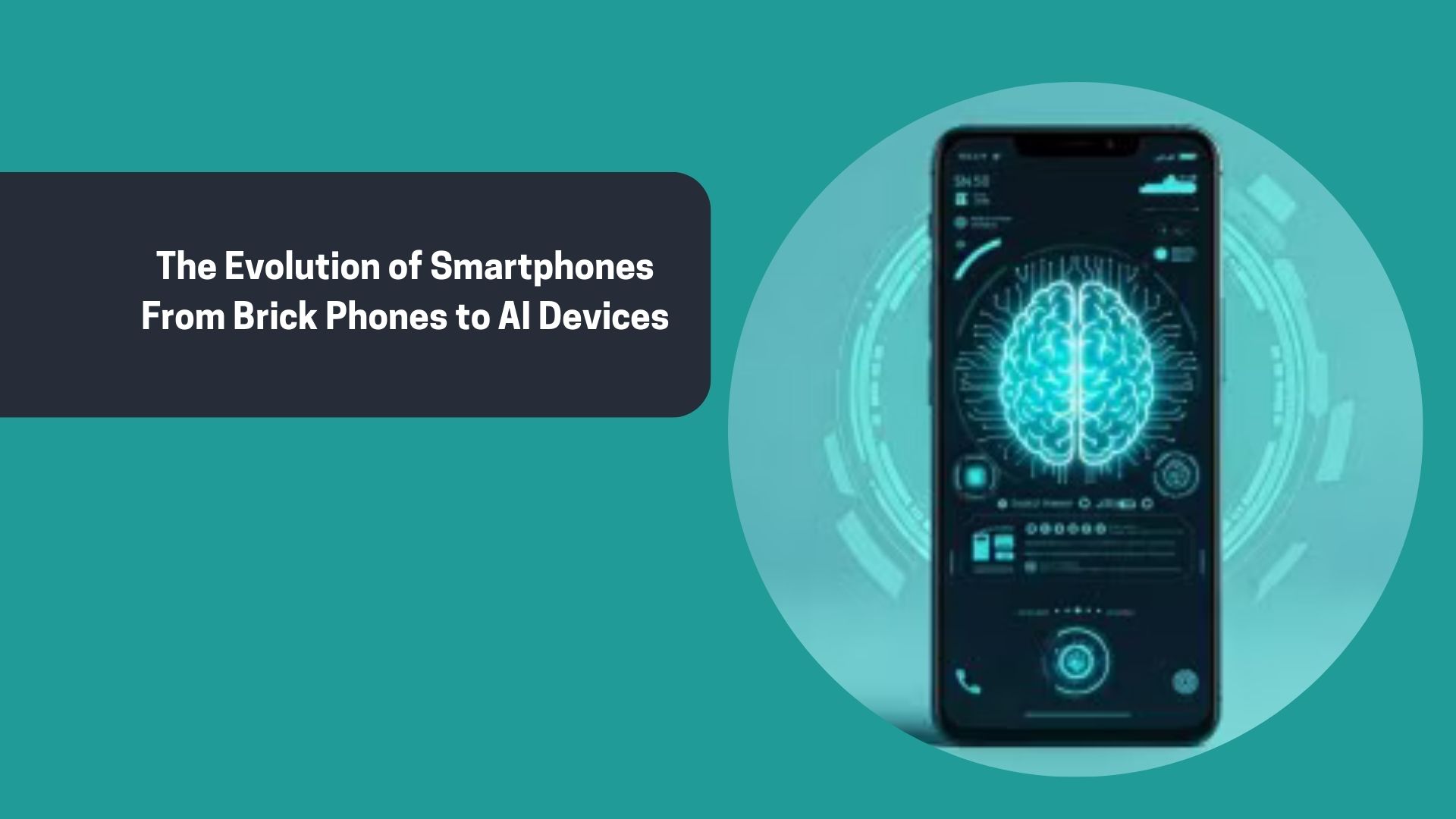Smartphones have come far from their bulky, limited-function predecessors to today’s sleek, AI-powered devices. Over the decades, technological advancements have transformed how we communicate, work, and entertain ourselves. Let’s explore the evolution of smartphones and their future.
1. The Brick Phone Era (1980s – Early 1990s)
The first mobile phones, like the Motorola DynaTAC 8000X, were large, heavy, and had minimal functionality beyond making calls. Business professionals primarily used these ‘brick’ phones due to their high cost.
2. The Rise of Feature Phones (1990s – Early 2000s)
Smaller, more affordable feature phones like the Nokia 3310 and Motorola Razr introduced SMS messaging, basic games, and longer battery life. The era also saw the introduction of polyphonic ringtones and WAP internet browsing.
3. The Birth of the Smartphone (Mid-2000s)
The launch of BlackBerry and early Windows Mobile devices brought email, QWERTY keyboards, and essential apps to mobile users. In 2007, Apple revolutionized the industry with the iPhone, featuring a touchscreen interface and the App Store.
4. The Touchscreen Revolution (2010s)
Android and iOS dominated the market, introducing larger displays, improved cameras, and mobile applications that expanded functionality. Innovations like fingerprint sensors, wireless charging, and AI assistants (Siri, Google Assistant) became standard.
5. 5G and AI Integration (2020s – Present)
The rollout of 5G connectivity enhanced internet speeds and enabled more innovative applications. AI-powered features like facial recognition, real-time language translation, and computational photography further elevated the smartphone experience.
6. The Future: AI-Powered Devices (Beyond 2025)
The next generation of smartphones will focus on AI-driven experiences, seamless AR integration, and even foldable or rollable screens. Devices may become more autonomous, predictive, and deeply embedded into our daily lives.
Conclusion
Smartphones have drastically evolved from brick-sized phones to AI-driven supercomputers in our pockets. As technology advances, the future promises even more groundbreaking innovations to reshape how we interact with the world.
#Tags:
- #SmartphoneEvolution
- #AItechnology
- #MobileTech
- #5G
- #TechHistory
- #Innovation
- #TouchscreenRevolution
- #FutureOfPhones
- #TechTrends
- #AIphones
The Evolution of Smartphones: From Brick Phones to AI Devices
Smartphones have come far from their bulky, limited-function predecessors to today’s sleek, AI-powered devices. Over the decades, technological advancements have transformed how we communicate, work, and entertain ourselves. Let’s explore the evolution of smartphones and their future.
1. The Brick Phone Era (1980s – Early 1990s)
The first mobile phones, like the Motorola DynaTAC 8000X, were large, heavy, and had minimal functionality beyond making calls. Business professionals primarily used these ‘brick’ phones due to their high cost.
2. The Rise of Feature Phones (1990s – Early 2000s)
Smaller, more affordable feature phones like the Nokia 3310 and Motorola Razr introduced SMS messaging, basic games, and longer battery life. The era also saw the introduction of polyphonic ringtones and WAP internet browsing.
3. The Birth of the Smartphone (Mid-2000s)
The launch of BlackBerry and early Windows Mobile devices brought email, QWERTY keyboards, and essential apps to mobile users. In 2007, Apple revolutionized the industry with the iPhone, featuring a touchscreen interface and the App Store.
4. The Touchscreen Revolution (2010s)
Android and iOS dominated the market, introducing larger displays, improved cameras, and mobile applications that expanded functionality. Innovations like fingerprint sensors, wireless charging, and AI assistants (Siri, Google Assistant) became standard.
5. 5G and AI Integration (2020s – Present)
The rollout of 5G connectivity enhanced internet speeds and enabled more innovative applications. AI-powered features like facial recognition, real-time language translation, and computational photography further elevated the smartphone experience.
6. The Future: AI-Powered Devices (Beyond 2025)
The next generation of smartphones will focus on AI-driven experiences, seamless AR integration, and even foldable or rollable screens. Devices may become more autonomous, predictive, and deeply embedded into our daily lives.
Conclusion
Smartphones have drastically evolved from brick-sized phones to AI-driven supercomputers in our pockets. As technology advances, the future promises even more groundbreaking innovations to reshape how we interact with the world.

